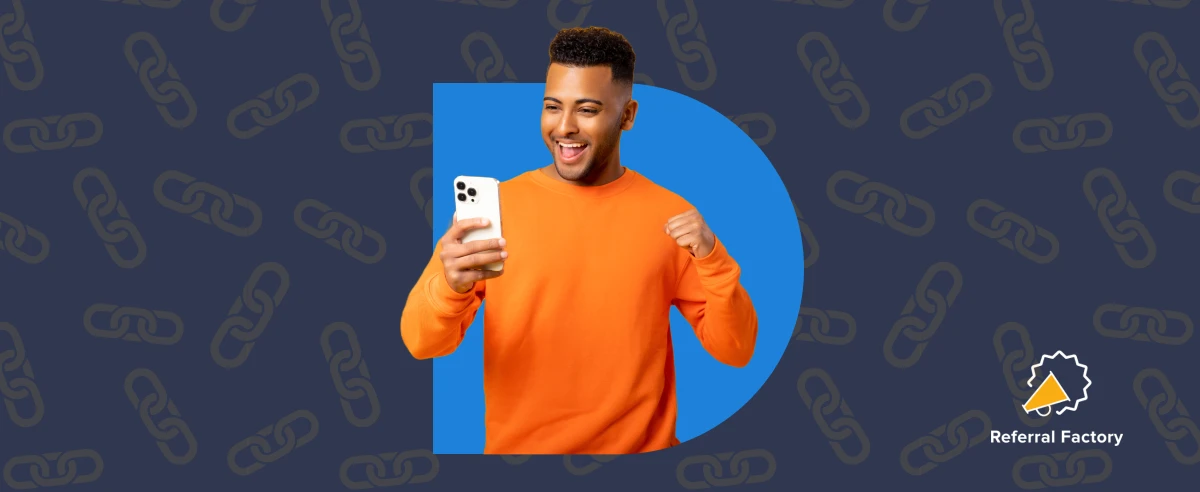How Education Businesses Can Turn Every Student, Parent, and Alumni Into a Lead-Generating Engine
A high-impact storytelling guide for schools, online courses, universities, tutors, and education platforms that want higher-quality enrollments, without bleeding cash on ads.
Every education business, whether you’re a traditional school, online university, short course provider, tutoring center, or learning platform, wakes up with the same question:
Picture this:
How do we attract more high-quality students without burning money on low-quality leads?
- A parent picks up their child who’s buzzing about a new teacher, a subject they finally “get,” or a big breakthrough.
- A working professional posts their new certificate on LinkedIn, proud and excited about what it means for their career.
Right there. Moments like that are the best marketing opportunity an education business has.
And the best part, there are so many of them!
When people feel proud of what they have learned or achieved, or proud of their child, they talk about it.
That’s why education is one of the most referral-friendly industries in the world.
Yet most schools, online programs, and learning platforms let that moment pass… with no system in place to turn it into referrals, leads, and enrolments.
This guide shows you how to fix that, and how to build a referral engine that turns every student, parent, and alumnus into a predictable lead-generating machine.
Table of Contents
1. The Harsh Reality: Education Lead Costs Are Out of Control
Let’s be honest:
Education marketing is harder today than at any point in the last decade.
- Paid ads? Expensive. Competitive. Exhausting. Education CPL creeps up every quarter.
- SEO? Powerful, but slow.
- Partnerships? Great, if you can get them.
- Social media? Time-consuming and unpredictable.
Plus, the competition is brutal:
- Schools on every corner
- Thousands of online courses
- Massive global learning platforms
- International universities entering local markets
The truth?
Education buyers are overwhelmed and incredibly cautious.
But there’s one channel that still outperforms everything else:
👉 Referrals 👉 Word of mouth 👉 Recommendations from trusted people
Whatever you call it, the numbers don’t lie:
- 83% of learners say recommendations strongly influence their decisions.
- 90% of parents actively seek others’ experiences before enrolling their child.
- Education is consistently among the top industries where referrals drive enrolment decisions.
Why?
Because nobody chooses education in isolation.
In education, referrals aren’t a “bonus” channel.
They’re the dominant decision-making currency.

2. Why Education Is PERFECT for Referral Programs
Education has referral “fuel” built right into its DNA.
Here’s why.
2.1 Education Runs on Trust
Education decisions feel high stakes:
- Parents are terrified of making the wrong choice for their child.
- Students don’t want to waste time or money.
- Professionals don’t want to invest in a course that doesn’t move their career forward.
So what do they do?
They ask someone they trust:
- a friend
- a colleague
- another parent
- a classmate
- an alumnus
This is why referred learners:
- convert at much higher rates
- stay longer
- engage more deeply
- and often achieve better outcomes
2.2 Students Naturally Befriend People Just Like Them
Students cluster around shared interests and ambitions.
That’s why referral programs fit education so well: People learn alongside others who want the same thing.
Example: Music lessons
If a child takes music lessons, there’s a good chance their closest friends also enjoy music. Referring their friends isn’t “marketing” it’s helping their friends join something they already love.
Example: Marketing courses
Marketers hang out with other marketers.
When one marketer completes a course that helps their career, recommending it makes them look like a leader in their field. Their friends get an advantage; they get status.
2.3 Students Who Join With Friends Stay Longer
This one’s big.
When someone enrolls with a friend, they:
- show up more
- feel more accountable
- stay enrolled longer
- perform better
- and yes, refer more
Referrals don’t just fill seats; they strengthen community and retention.
2.4 Education Has Built-In Referral Seasons
Most industries have to create referral moments from scratch.
Education doesn’t.
You already have natural “referral peaks” baked into the calendar:
- the start and end of terms
- report card days
- exam results
- certification releases
- graduations
- application windows
Every one of those moments is a chance to say:
“If you know someone who’d benefit from this too, here’s your referral link.”
3. The Three Referral Goldmines Most Education Businesses Ignore
Every education business has three enormous referral engines with different motivations.
Most institutions only tap into one.
The smart ones activate all three.
3.1 Current Students
- 59% of students in online programs refer at least one friend.
Students want to:
- learn with friends
- feel like they belong
- share opportunities
- be seen as someone “in the know”
And as for rewards?
Students love cash, because many don’t yet have disposable income.
3.2 Parents of Current Students
- 76% of parents are willing to recommend their child’s school.
Parents talk. Constantly.
They’re in:
- neighborhood WhatsApp groups
- school texting groups
- class parent committees
- PTA boards
- local Facebook communities
- sports and extracurricular circles
One parent referral can trigger dozens of leads.
This is micro-virality in action.
3.3 Alumni (Your Sleeping Giant)
This is the most underused group in the industry.
Schools that intentionally activate alumni networks see 3× more referral volume.
Alumni refer because:
- they feel nostalgic
- they’re proud of where they studied
- referrals validate their own decision to attend
- it elevates their professional image
They’re not “selling.”
They genuinely want others to benefit from the same experience they had.
One engaged alumni base can drive an entire enrollment cycle.
4. Designing a Referral Program That Actually Works
Let’s turn those insights into a real program.

4.1 What Rewards Work Best?
Different audiences = different motivators.
For students:
- 💰 Cash – great if you offer a single course or short programs.
- 🎓 Credit – if you offer multiple courses or multi-term enrollment.
For parents:
- 🎓 Tuition credit / fee discount – powerful if their child is still enrolled.
- 💰 Cash – if their child has already graduated.
For alumni:
- 💰 Cash – they’re no longer paying fees, so this lands best.
- 🎁 Perks – e.g. event invitations, recognition, or branded gifts can also work as an added bonus or thank you.
4.2 The Golden Reward Rule
The reward must actually feel meaningful.
If your program costs $1,000+, offering $10 as a reward feels insulting.
Ask yourself:
- What do we currently pay to acquire a student?
- What portion of that could we comfortably give to someone who brings us a high-quality, pre-warmed lead?
In many cases, your current acquisition cost is higher than what you’d ever spend on referral rewards.
4.3 The Offer Is More Important Than the Reward
The reward motivates the referrer.
The offer motivates the new student.
Big difference.
Double-sided referral programs (where both sides get something) perform dramatically better because they change the tone of the ask.
If I say:
“Use my link so I get $50.”
I sound selfish.
If instead I say:
“Use my link, you’ll get 20% off your first course.”
I sound helpful.
That small psychological shift:
- makes referrals easier to bring up
- elevates the referrer’s social status
- massively increases referral volume
Referrers want to feel like they’re doing their friend a favor, not pushing a deal.
5. When and Where Should Education Businesses Ask for Referrals?
Most education businesses make one fatal mistake:
They ask for referrals once… and expect miracles.
Referrals are a habit, not a one-time event.
5.1 Perfect Moments to Ask for Referrals
Ask when students or parents are most excited or relieved, when they’re feeling the value:
- right after enrollment
- after a great class or module
- during parent-teacher meetings
- on report card day
- when results or certifications are issued
- at the beginning or end of a semester
- after a milestone achievement
- at graduation
- after a successful campus tour or orientation
Tie your ask to a moment of pride.
5.2 Where to Promote Your Referral Program (High-Impact Channels)
Make sure your referral program is impossible to miss:
- 📦 Inside welcome packs
- 📧 Email campaigns and newsletters
- 📱 SMS reminders
- 🧧 Referral cards included with reports or certificates
- 🖥️ Banners inside the student or parent portal
- 👨🏫 Teachers and tutors mentioning it at the end of class
- 👩👧 Parent meetings and information evenings
- 💬 Parent text and WhatsApp groups
- 📲 Your website dashboard / student login page
- 👔 Email signatures for teachers and admin staff
- 🎓 Alumni newsletters and LinkedIn groups
- 📣 Graduation day slides, banners, and handouts
- 🤳 Scannable QR codes on campus, in hallways, and reception
And remember:
You can’t whisper a referral program into existence.
You must ask, clearly and repeatedly.
Consistency is everything.
6. What It Actually Looks Like to Launch an Education Referral Program
The good news?
It’s not complicated.
A solid setup for an education referral program usually takes 2–5 days, depending on complexity.
You’ll need:
- Referral software (e.g. Referral Factory)
- Automated, unique referral links
- A simple, clear landing page
- Lead capture and tracking
- Enrollment tracking connected to your CRM or SIS
- Reward workflows and payout automation
- Email and SMS templates
- Short scripts for teachers, tutors, and staff
- A clear launch plan
- A promotion cadence (when and how often you’ll remind people)
You only pay rewards after tuition has been paid making referrals
- Low risk
- High ROI
- Extremely scalable
Education businesses running proper referral programs typically see: Around 34% more leads per year from referrals alone.
7. The Most Profitable Lead Sources in Education (Ranked)
Here’s how most education companies stack their channels when they actually run the numbers:
1. Referrals
The #1 most profitable channel.
- High intent
- High trust
- Lowest cost
- Highest retention
2. Organic Search (SEO)
Incredible, but slow.
Referrals help bridge the gap while SEO matures.
3. Partnerships & Affiliates
Warm audiences + borrowed trust.
Great quality, but require relationship-building.
4. Paid Ads
They can work, but:
- they often attract “freebie hunters”
- competition is fierce
- cost-per-click rises every year
Useful, but rarely your most profitable channel.
5. Alumni
Technically part of referrals but worth a separate callout.
Alumni are your built-in ambassadors:
- They WANT to refer.
- They look good when they do.
- They reinforce their own identity as someone who “chose well.”
One engaged alumni base can literally carry an entire intake.

8. How Education Companies Can Stand Out in a Crowded Market
8.1 Be Everywhere in the Research Phase
People don’t enroll on day one.
They:
- research
- compare
- ask friends and colleagues
- read reviews
- narrow down to a short list
To stand out, you must show up across that whole decision journey:
- reviews
- student and parent testimonials
- search results
- alumni stories
- Google Business listings
- FAQ and comparison pages
- social media mentions and case studies
Visibility = trust.
And trust = enrollment.
8.2 Collect Reviews Nonstop
Every happy student or parent is a potential billboard.
Use their words on:
- course and program pages
- landing pages
- follow-up emails
- webinars and presentations
The more real voices you showcase, the more confident prospects feel.
8.3 Nurture, Don’t Nag
Send helpful, human messages, not just “Enroll now!” reminders.
Examples:
- “Choosing the right school: 10 questions to ask.”
- “How to prepare for your first semester.”
- “What actually makes a great tutor?”
The more you guide, the more they trust you.
The more they trust you, the more they choose you.
9. A Proven Enrollment Funnel for Education Companies
Here’s a simple funnel that works across almost every education model:
Landing Page → Intro Call / Campus Tour → Enrollment → Referral Program
Every new student automatically becomes the fuel for the next student.
That’s how you create compounding growth.
10. Education Referral Program Template (Copy/Paste)
Program Name:
🎓 Learn Together Rewards. Earn Up to $200 for Every Student You Refer
How It Works
- Share your referral link
Students, parents, and alumni each receive a unique referral link. - Their friend receives a special benefit, such as:
- 20% off first-term tuition
- a free intro class
- a discounted enrollment fee
- You receive a reward, such as:
- $50–$200 cash
- tuition credit
- course credit
- exclusive alumni perks
Unlimited referrals.
Terms (Example)
- New students only
- Reward issued after the new student’s tuition payment is processed
- No limit on the number of referrals
- Rewards issued within 14 days of confirmation
You can drop this copy straight onto a landing page, student portal page, or printed card with a QR code.
11. Email Scripts for Education Referral Requests
Use these as plug-and-play templates.
Email 1 — After First Week of Classes (Parents)
Subject: Your child is settling in beautifully 🎓
Hi {{Name}},
We’re so glad to see {{ChildName}} enjoying their first week with us!
If you know another family who’d benefit from the same experience, feel free to share your referral link below. They’ll get 20% off their first term, and you’ll receive $200 in tuition credit as a thank-you
👉 {{ReferralLink}}
Thank you for being part of our community,
{{SchoolName}}
Email 2 — For Online Courses (Students/Professionals)
Subject: You crushed your first module! Want to help a friend do the same?
Hey {{Name}},
Great work on completing Module 1. 🎉 That’s a big step toward your goal.
If you know a friend or colleague who’d enjoy this course too, here’s your link, it gives them a discount and earns you $50 when they enroll.
👉 {{ReferralLink}}
Keep going, you’re doing amazing.
{{CourseName}} Team
Email 3 — Parent Reminder Mid-Term
Subject: Want to save on next term’s fees? 💡
Hi {{Name}},
Just a friendly reminder that our referral program is live.
For every family you introduce, they receive a discount—and you earn tuition credit toward your child’s fees.
👉 {{ReferralLink}}
Thank you for spreading the word,
{{SchoolName}}
12. Pitch Template: How to Propose a Referral Program to Leadership
Use this structure word-for-word in an internal doc or slide deck.
1. The Problem
- Cost per lead is rising
- Paid ads attract low-intent leads
- Competition is increasing
- Enrollment cycles are becoming more expensive to fill
- We need sustainable, profitable acquisition channels
2. The Solution
Launch a referral program. Referrals deliver:
- higher quality leads
- higher conversion rates
- lower cost per acquisition
- predictable, compounding growth
- warm introductions from trusted sources
- faster enrollment decisions
3. The Economics
- Rewards are only paid after tuition is paid
- No physical inventory or major overhead
- Setup takes 2–5 days
- Costs are minimal compared to current acquisition costs
- In education, referrals routinely outperform paid ads by 2–3×
4. The Plan
- Set up referral software and create unique referral links for students, parents and alumni.
- Build a simple referral dashboard and landing page
- Automate tracking and payouts
- Promote the program at key touchpoints
- Launch across three audiences: students, parents, alumni
5. Expected Outcomes
- +25–40% more leads per year
- Lower CPL by 20–40%
- Higher retention (students who join with friends stay longer)
- Stronger community engagement
- More predictable and scalable enrollment cycles
6. Why Now
- Competition and ad costs are rising
- Buyers trust referrals more than they trust ads
- We already have a strong base of students, parents, and alumni
- Education decisions are heavily influenced by peers, referrals align perfectly with how people already choose
13. Final Thoughts: The Future of Education Marketing Is Community-Powered
Education businesses spend enormous time and money trying to get attention.
But your most powerful marketing channel is already inside your walls:
- your students
- your parents
- your alumni
They’re proud.
They’re connected.
They’re influential.
And most importantly, they want others to have the same experience.
With the right referral system, the right offer, the right timing, and the right reminders, you can turn your entire community into a self-sustaining enrollment engine.
Because in education, your next student rarely comes from an ad.
Your next student comes from your last student.




